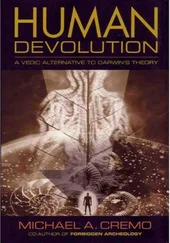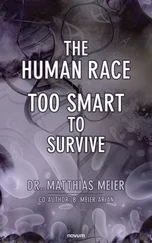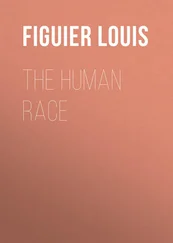Michael Cremo - Forbidden Archeology - The Hidden History of the Human Race
Здесь есть возможность читать онлайн «Michael Cremo - Forbidden Archeology - The Hidden History of the Human Race» весь текст электронной книги совершенно бесплатно (целиком полную версию без сокращений). В некоторых случаях можно слушать аудио, скачать через торрент в формате fb2 и присутствует краткое содержание. Год выпуска: 1992, ISBN: 1992, Издательство: Torchlight Publishing, Жанр: Старинная литература, на английском языке. Описание произведения, (предисловие) а так же отзывы посетителей доступны на портале библиотеки ЛибКат.
- Название:Forbidden Archeology: The Hidden History of the Human Race
- Автор:
- Издательство:Torchlight Publishing
- Жанр:
- Год:1992
- ISBN:9780892132942
- Рейтинг книги:4 / 5. Голосов: 1
-
Избранное:Добавить в избранное
- Отзывы:
-
Ваша оценка:
- 80
- 1
- 2
- 3
- 4
- 5
Forbidden Archeology: The Hidden History of the Human Race: краткое содержание, описание и аннотация
Предлагаем к чтению аннотацию, описание, краткое содержание или предисловие (зависит от того, что написал сам автор книги «Forbidden Archeology: The Hidden History of the Human Race»). Если вы не нашли необходимую информацию о книге — напишите в комментариях, мы постараемся отыскать её.
Forbidden Archeology: The Hidden History of the Human Race — читать онлайн бесплатно полную книгу (весь текст) целиком
Ниже представлен текст книги, разбитый по страницам. Система сохранения места последней прочитанной страницы, позволяет с удобством читать онлайн бесплатно книгу «Forbidden Archeology: The Hidden History of the Human Race», без необходимости каждый раз заново искать на чём Вы остановились. Поставьте закладку, и сможете в любой момент перейти на страницу, на которой закончили чтение.
Интервал:
Закладка:
This process of rejection does not usually involve careful scrutiny of the evidence by the scientists who reject it. Human time and energy are limited, and most scientists prefer to focus on positive research goals, rather than spend time scrutinizing unpopular claims. In the scientific community, the word will go out that certain findings are bogus, and this is enough to induce most scientists to avoid the rejected material.
When theories change, and a certain body of ideas and discoveries becomes unacceptable, there is generally a period of time during which prominent scientists will publish systematic attacks against the unwanted findings. (In the parlance of some scientists at the British museum, these attacks are known as “demolition jobs.”)
If the attacks are successful, then after some last attempts at rebuttal by diehard supporters, scientists will realize it is not in their best interest to defend the unwanted material or be associated with it. A shroud of silence descends over the rejected evidence, and it continues to exist only in fossilized form in the moldering pages of old scientific journals. As time passes, a few dismissive mentions may be made in occasional footnotes, and then a new generation of scientists grows up, largely unaware that the earlier evidence ever existed.
This process of suppression of evidence is illustrated by many of the anomalous paleoanthropological findings discussed in this book. This evidence now tends to be extremely obscure, and it also tends to be surrounded by a neutralizing nimbus of negative reports, themselves obscure and dating from the time when the evidence was being actively rejected. Since these reports are generally quite derogatory, they may discourage those who read them from examining the rejected evidence further.
However, the negative reports generally provide many references to earlier positive reports. When these are examined in detail, it is often found that they contain a wealth of detailed information and reasoning not adequately dealt with in the later negative critiques. Thus to properly evaluate anomalous evidence, there is no alternative to examining in detail the arguments and evidence presented in the original reports. And that is what we now propose to do.
Incised and Broken Bones: The Dawn of Deception
Intentionally cut and broken bones of animals comprise a substantial part of the evidence for human antiquity. They came under serious study in the middle of the nineteenth century and have remained the object of extensive research and analysis up to the present.
In the decades following the publication of Darwin’s The Origin of Species, many scientists found incised and broken bones indicating a human presence in the Pliocene, Miocene, and earlier periods. Opponents suggested that the marks and breaks observed on the fossil bones were caused by the action of carnivores, sharks, or geological pressure. But supporters of the discoveries offered impressive counterarguments. For example, stone tools were sometimes found along with incised bones, and experiments with these implements produced marks on fresh bone exactly resembling those found on the fossils. Scientists also employed microscopes in order to distinguish the cuts on fossil bones from those that might be made by animal or shark teeth. In many instances, the marks were located in places on the bone appropriate for specific butchering operations.
Nonetheless, reports of incised and broken bones indicating a human presence in the Pliocene and earlier are absent from the currently accepted stock of evidence. This exclusion may not, however, be warranted. From the incomplete evidence now under active consideration, scientists have concluded that humans of the modern type appeared fairly recently. But in light of the evidence covered in this chapter, the soundness of that conclusion is somewhat deceptive.
2.1 St. Prest, France (early Pleistocene or Late Pliocene)
Just above the famous cathedral town of Chartres in northwestern France, at St. Prest, in the valley of the Eure River, there are gravel pits, where, in the early nineteenth century, workmen occasionally turned up fossils. These were first reported to the scientific world in 1848 by Monsieur de Boisvillette, the engineer in charge of the local bridges and causeways. The numerous fossils, including many extinct animals such as Elephas meridionalis, Rhinoceros leptorhinus, Rhinoceros etruscus, Hippopotamus major, and a giant beaver called Trogontherium cuvieri, were judged to be characteristic of the Late Pliocene (de Mortillet1883, pp. 28–29).
A further indication of the fossils’ great antiquity was the fact that the gravels in which they were found lay at an elevation of 25 to 30 meters [82 to 98 feet] above the present level of the Eure, where an ancient river once ran in a different bed. The geological reasoning is as follows. When rivers cut valleys into a plain, the most recent gravels will normally be found near the bottom of the valley. Gravels found further up on the sides of the valley were deposited earlier by the same river, or other rivers, before the valley reached its present depth. The higher the gravels, the greater their age.
In April of 1863, Monsieur J. Desnoyers, of the French National Museum, came to St. Prest to gather fossils. From the sandy gravels he recovered part of a rhinoceros tibia, upon which he noticed a series of narrow grooves, longer and deeper than could have resulted from minor fracturing or weathering. To Desnoyers, some of the grooves appeared to have been produced by a sharp knife or blade of flint. He also observed small circular marks that could well have been made by a pointed implement (de Mortillet 1883, p. 43). Later, upon examining collections of St. Prest fossils at the museums of Chartres and the School of Mines in Paris, Desnoyers recognized upon a diverse assortment of bones the same types of marks. He then reported his findings to the French Academy of Sciences, maintaining that while some of the marks could possibly be attributed to glacial action others were definitely the work of humans.
If Desnoyers concluded correctly that the marks on many of the bones had been made by flint implements, then it would appear that human beings had been present in France before the end of the Pliocene period. One might ask, “What’s wrong with that?” In terms of our modern understanding of paleoanthropology, quite a bit is wrong. The presence at that time in Europe of beings using stone tools in a sophisticated manner would seem almost impossible. It is believed that at the end of the Pliocene, about 2 million years ago, the modern human species had not yet come into being. Only in Africa should one find primitive human ancestors, and these were limited to Australopithecus and Homo habilis, considered the first toolmaker.
At this point, some will inevitably question whether the nineteenth-century scientists were correct in assigning the St. Prest site to the Late Pliocene. The short answer to this question is a qualified yes.
As we mentioned in our discussion of the geological time periods in the previous chapter (Section 1.7), the dating of sites at the Pliocene-Pleistocene boundary remains a matter of intense controversy. Since the St. Prest site lies roughly in this period, one might expect various authorities to place it differently. And it turns out that this is in fact the case.
The American paleontologist Henry Fairfield Osborn (1910, p. 391) placed St. Prest in the Early Pleistocene. In times closer to our own, Claude Klein (1973, pp. 692–693) reviewed French opinion regarding the age of the St. Prest fauna. In 1927, Charles Deperet characterized St. Prest as Late Pliocene. G. Denizot placed St. Prest in the Cromerian interglacial stage of the Middle Pleistocene, a view he consistently maintained into the late 1960s. In 1950, P. Pinchemel referred St. Prest to the Late Pliocene. More recently, F. Boudier, in 1965, placed St. Prest in the Waalian temperate stage of the late Early Pleistocene, with a quantitative date of about 1 million years (Klein 1973, p. 736).
Читать дальшеИнтервал:
Закладка:
Похожие книги на «Forbidden Archeology: The Hidden History of the Human Race»
Представляем Вашему вниманию похожие книги на «Forbidden Archeology: The Hidden History of the Human Race» списком для выбора. Мы отобрали схожую по названию и смыслу литературу в надежде предоставить читателям больше вариантов отыскать новые, интересные, ещё непрочитанные произведения.
Обсуждение, отзывы о книге «Forbidden Archeology: The Hidden History of the Human Race» и просто собственные мнения читателей. Оставьте ваши комментарии, напишите, что Вы думаете о произведении, его смысле или главных героях. Укажите что конкретно понравилось, а что нет, и почему Вы так считаете.












